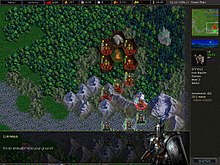
A wargame is a strategy game in which two or more players command opposing armed forces in a hypothetical simulation of some military operation. Wargaming may be played for recreation, to train military officers in the art of strategic thinking, or to study the nature of potential conflicts. Many wargames re-create specific historic battles, and can cover either whole wars, or any campaigns, battles, or lower-level engagements within them. Many simulate land combat, but there are wargames for naval and air combat, as well.
Real-time strategy (RTS) is a subgenre of strategy video games that doesn't progress incrementally in turns, but allow all players to play simultaneously, in "real time". By contrast, in turn-based strategy (TBS) games, players take turns to play. The term "real-time strategy" was coined by Brett Sperry to market Dune II in the early 1990s.
A turn-based strategy (TBS) game is a strategy game where players take turns when playing. This is distinguished from real-time strategy (RTS), in which all players play simultaneously.

Panzer General is a 1994 computer wargame developed and published by Strategic Simulations Inc. (SSI). It simulates conflict during World War II. The designers of Panzer General were heavily influenced by the Japanese wargame series Daisenryaku.
Steel Beasts is the name for a family of tank simulators created by eSim Games for Microsoft Windows.

Steel Panthers is a series of computer wargames, developed and published by several different companies, with various games simulating war battles from 1930 to 2025. The first Steel Panthers game was released in 1995, and the most recent update was released in 2018 and is still updated regularly (yearly).

4X is a subgenre of strategy-based computer and board games, and includes both turn-based and real-time strategy titles. The gameplay generally involves building an empire. Emphasis is placed upon economic and technological development, as well as a range of military and non-military routes to supremacy.
Tactical role-playing games, also known as strategy role-playing games and in Japan as simulation RPGs, are a video game genre that combines core elements of role-playing video games with those of tactical strategy video games. The formats of tactical RPGs are much like traditional tabletop role-playing games and strategy games in appearance, pacing, and rule structure. Likewise, early tabletop role-playing games are descended from skirmish wargames such as Chainmail, which were primarily concerned with combat.

PanzerBlitz is a tactical-scale board wargame published by Avalon Hill in 1970 that simulates armored combat set on the Eastern Front of World War II. The game, which was the most popular board wargame of the 1970s, is notable for being the first true board-based tactical-level, commercially available conflict simulation wargame. It also pioneered several concepts that would become industry standards.
The following outline is provided as an overview of and topical guide to video games:

Tactical wargames are a type of wargame that models military conflict at a tactical level, i.e. units range from individual vehicles and squads to platoons or companies. These units are rated based on types and ranges of individual weaponry. The first tactical wargames were played as miniatures, extended to board games, and they are now also enjoyed as video games.
Real-time tactics (RTT) is a subgenre of tactical wargames played in real-time, simulating the considerations and circumstances of operational warfare and military tactics. It is differentiated from real-time strategy gameplay by the lack of classic resource micromanagement and base or unit building, as well as the greater importance of individual units and a focus on complex battlefield tactics.
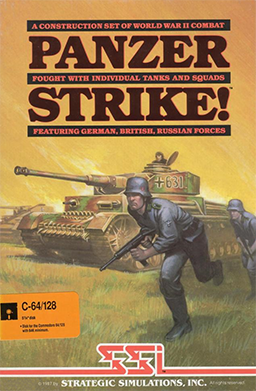
Panzer Strike is a 1988 tactical wargame that simulates small unit actions during World War II. It was made for Apple II and Commodore 64 and was released by Strategic Simulations.
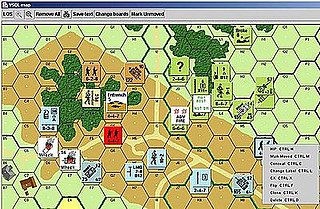
A computer wargame is a wargame played on a digital device. Descended from board wargaming, it simulates military conflict at the tactical, operational or strategic level. Computer wargames are both sold commercially for recreational use and, in some cases, used for military purposes.
Strategy is a major video game genre that emphasizes thinking and planning over direct instant action in order to achieve victory. Although many types of video games can contain strategic elements, as a genre, strategy games are most commonly defined as those with a primary focus on high-level strategy, logistics and resource management. They are also usually divided into two main sub-categories: turn-based and real-time, but there are also many strategy cross/sub-genres that feature additional elements such as tactics, diplomacy, economics and exploration.
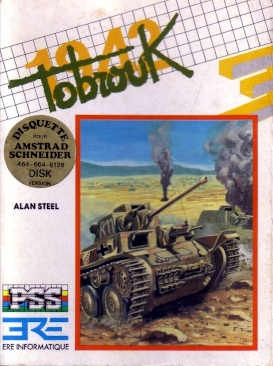
Tobruk: The Clash of Armour is a turn-based strategy video game developed by Data Design Systems and published by Personal Software Services. It was exclusively released in the United Kingdom for the Commodore 64, ZX Spectrum and Amstrad CPC in 1987. It is the eleventh instalment of the Strategic Wargames series. The game is set during the 1941 Siege of Tobruk of the Western Desert Campaign in World War II and revolves around the Allied forces attempts to overthrow German field marshal Erwin Rommel from the city.
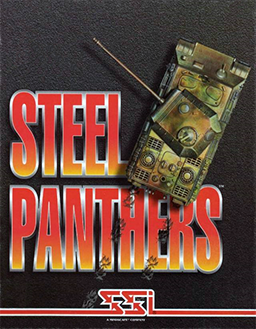
Steel Panthers is a 1995 computer wargame developed and published by Strategic Simulations. Designed by Gary Grigsby and Keith Brors, it simulates ground warfare during World War II, across the Western Front, Eastern Front and Pacific Theatre.

The Great Battles of Alexander is a 1997 turn-based computer wargame developed by Erudite Software and published by Interactive Magic. Adapted from the GMT Games physical wargame of the same name, it depicts 10 of Alexander the Great's key conflicts, and simulates the interplay between Ancient Macedonian battle tactics and its rival military doctrines. Gameplay occurs at the tactical level: players direct predetermined armies on discrete battlefields, in a manner that one commentator compared to chess.

Steel Panthers II: Modern Battles is a 1996 computer wargame developed and published by Strategic Simulations. It is the sequel to Steel Panthers and the second entry in the Steel Panthers series. The game was designed by Gary Grigsby and Keith Brors.
